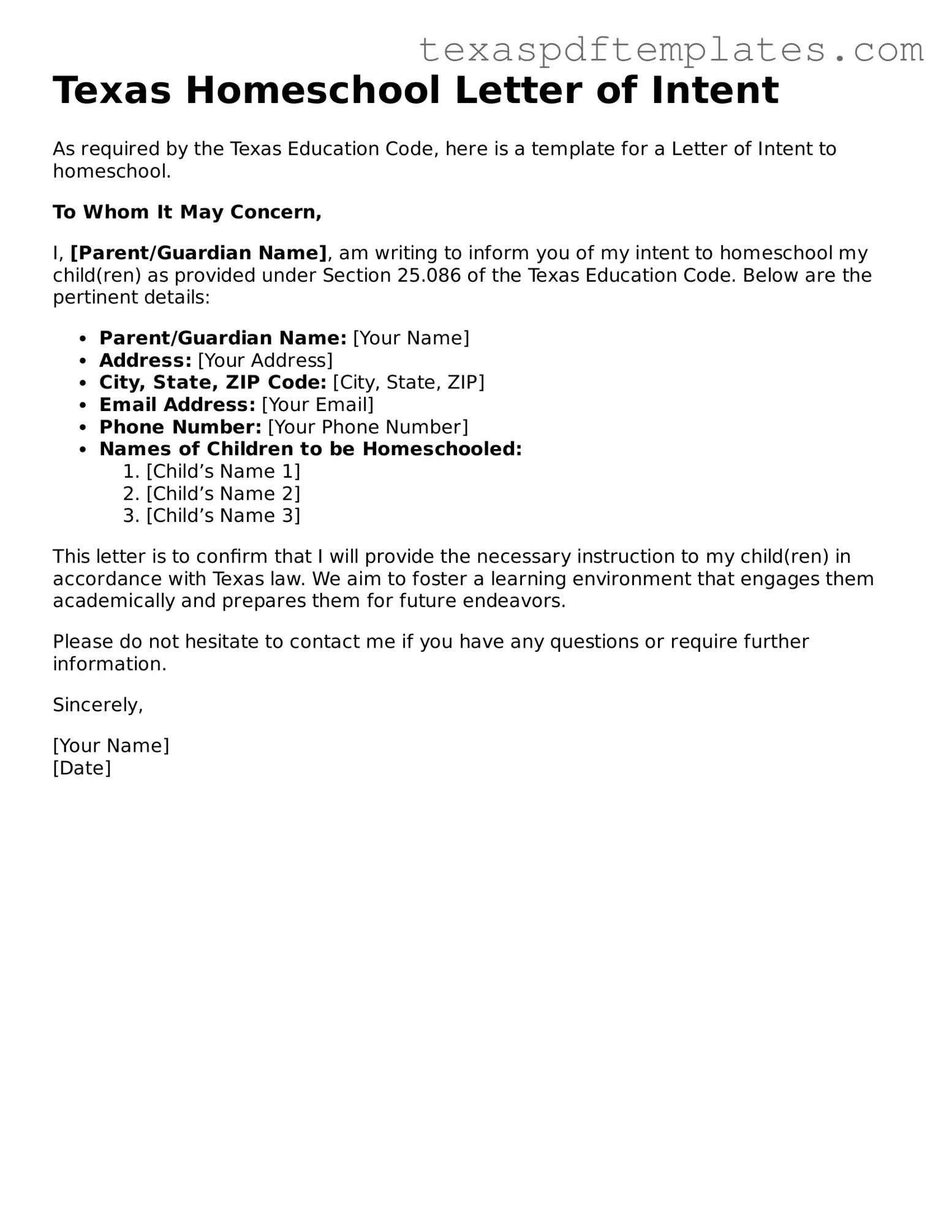Attorney-Approved Texas Homeschool Letter of Intent Template
The Texas Homeschool Letter of Intent is a document that parents submit to formally notify the state of their decision to homeschool their children. This form is a crucial step in the homeschooling process, as it establishes the family's intent to provide education outside of the traditional school system. Understanding the requirements and implications of this form is essential for families considering homeschooling in Texas.
Open Form
